In June 2016, DC Comics began its Rebirth initiative. After a wave of criticism surrounding the way they have treated their characters’ rich histories since 2011’s New 52 relaunch, DC has decided to rebrand. They hope that by restoring their characters’ pasts, they will restore readers’ faith in them as well. Do they succeed? That’s what the Comics Beat managing editor Alex Lu and entertainment editor Kyle Pinion are here to discuss. Book by book. Panel by panel.
THIS WEEK: We add a new member to our rotation! Loyal readers, let’s give a warm welcome to Beat newcomer Louie Hlad, who will be taking on the DC books every third week as we’ll be switching off between the three of us.
Note: the reviews below contain **spoilers**. If you want a quick, spoiler-free buy/pass recommendation on the comics in question, check out the bottom of the article for our final verdict
 Dastardly & Muttley #1
Dastardly & Muttley #1
Writer: Garth Ennis
Artist: Mauricet
Colorist: John Kalisz
Letterer: Rob Steen
Younger readers will be excused if they don’t immediately recognize the title characters in this comic. Dick Dastardly was a villainous antagonist who appeared in multiple Hanna-Barbera cartoons in the 1960’s and beyond. He was a classic Saturday morning adversary during my childhood: a two-dimensional mustache twirling foil for the week’s hero characters. He and his loyal(ish) sidekick, an upright-walking dog named Muttley, never seemed to succeed in their nefarious schemes to win a drag race by cheating or to beat Yogi Bear and friends to a hidden treasure. These episodes more often than not ended with Dastardly blown up and Muttley mocking him via his signature wheezing laugh (which this comic transcribes as “HRCH-HRCH-HRCH-HWEEENN”). My younger self almost rooted for them to win, they were so endearingly doomed to accidental mishap.
DC Comics has been making use of various Hanna-Barbera characters lately, often incorporating them into the DC Universe proper. The Flintstones were visited by the time travelling Booster Gold, and Space Ghost had a team up with fellow space cop Hal Jordan. A version of Dastardly and Muttley even appeared in a gritty Mad Max style remake of the campy sixties cartoon Wacky Races, though they hold very little resemblance to the incarnations presented here.
I’m still waiting for Animal Man to team up with the Hair Bear Bunch. But I digress. Let us focus on this week’s Dastardly & Muttley #1.

The strong appeal of this issue is its embrace of the farcical. Dick and Mutt locate the missing drone to find it spewing out an exhaust trail of goofy cartoon sigils, which transform the jet controls into animated playthings. Dick tries his best to regain control of the plane using its new clown car steering wheel and bicycle horn, while Mutt realizes his eyes have literally popped out of their sockets as he watches the ground rush up to meet them. The panicked copilot decides to eject them both by pounding the big red shiny button that has appeared in front of him. Further complications are revealed later in the issue as the result of Mutt allowing his dog to sit in his lap during the mission.
The latter half of this first issue is spent in Dick’s recovery room at the Air Force base. As he tries to make sense of his strange memories, he is questioned by a pair of agents who want to know the location of the Colonel’s plane. The scene turns gradually from rational to nonsensical as we discover that the agents had a similar encounter with the drone and are experiencing side effects. The cloud of cartoon exhaust that emanates from the drone seems to cause reality to warp into something resembling the Warner Brothers cartoon universe. There are mentions of wascally rabbits, the ACME catalog, and even Elmer Fudd. I love perception-bending stories (and classic Looney Tunes characters), so I can’t wait to see where this is headed over the next five issues of the mini-series. Here’s hoping for a Road Runner appearance.
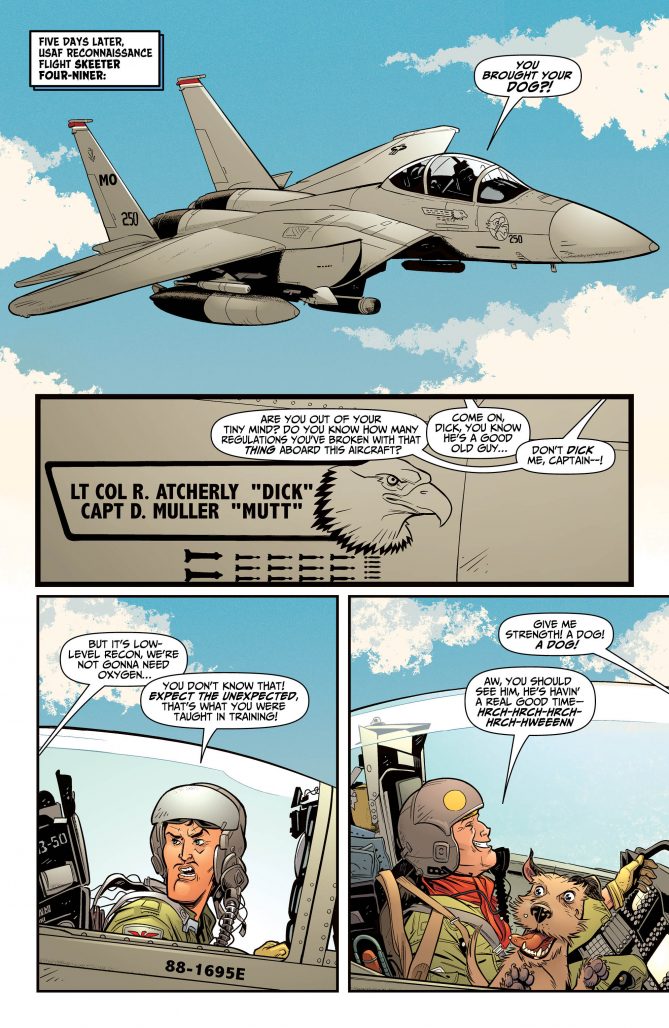
An enjoyable and promising start. The only thing missing is Dastardly’s catchphrase: “Drat, drat, and double drat!”
Verdict: Buy
 Bombshells United #1
Bombshells United #1
Writer: Marguerite Bennett
Artist: Marguerite Sauvage
Letterer: Wes Abbott
I’m going to do something here that I probably shouldn’t: attempt to review a team book without having any understanding or history with the individual characters.
I remember when DC introduced a series of collectible statues a few years ago that depicted female superheroes in the style of 1940’s pin-up models. It was an intriguing mix of modern femininity, wartime ambiance, and the golden age of comics. And it worked. Seeing Wonder Woman as a Rosie the Riveter inspirational icon felt natural and I could easily picture Harley Quinn painted on the nose of a WWII bomber. These popular statues are still being released and DC has featured these character images on variant comic covers as well. I even saw DC Bombshells costume patterns in my local fabric store last month. This thing looks to be catching on.
But that’s as far as my knowledge goes. I hadn’t read any of the previous Bombshells digital or print comics when I jumped into this week’s #1 team issue, which made my experience a bit more challenging. Imagine picking up a random issue of Justice League as your very first DC comic and trying to make sense of what was going on. Still, this issue has a #1 stamped on the cover as well as the promise “The fight for freedom starts here!” so I had some expectation that a new reader could jump in and tread water. Let’s see how it went.
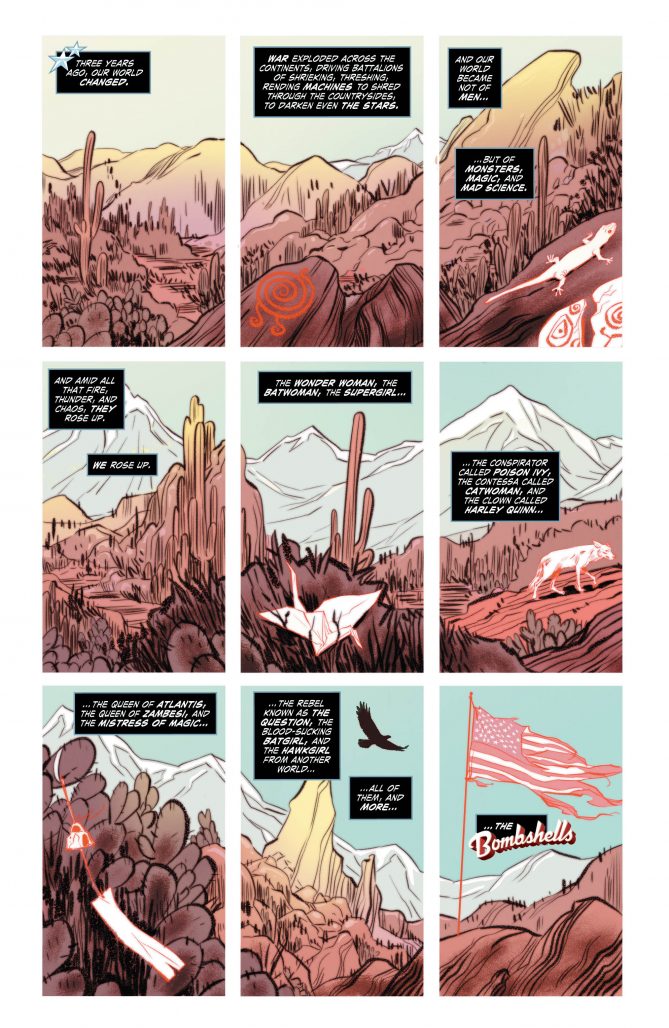
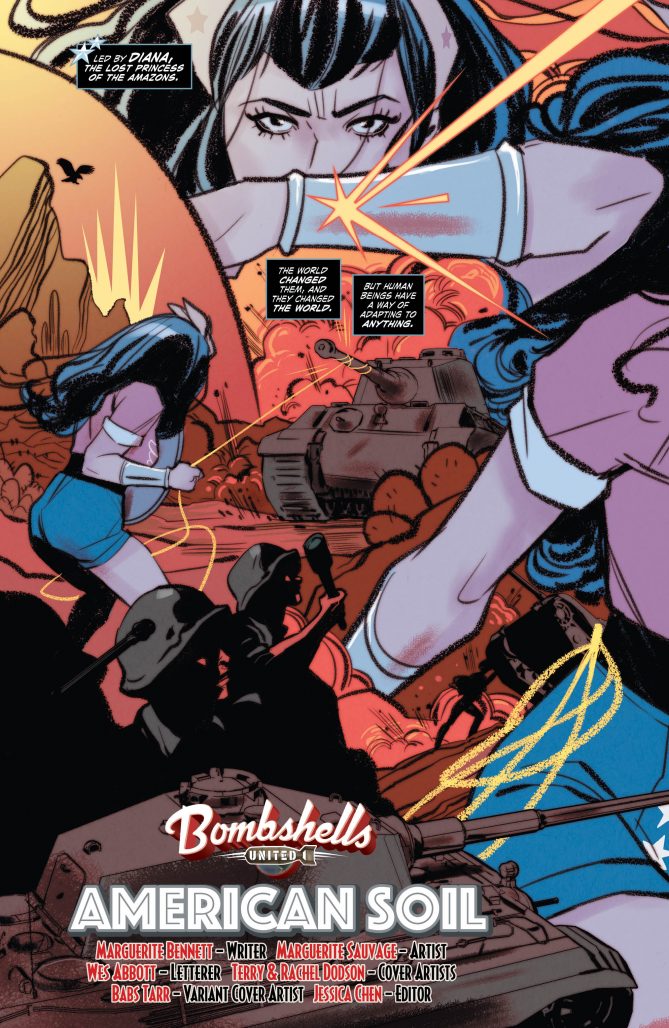
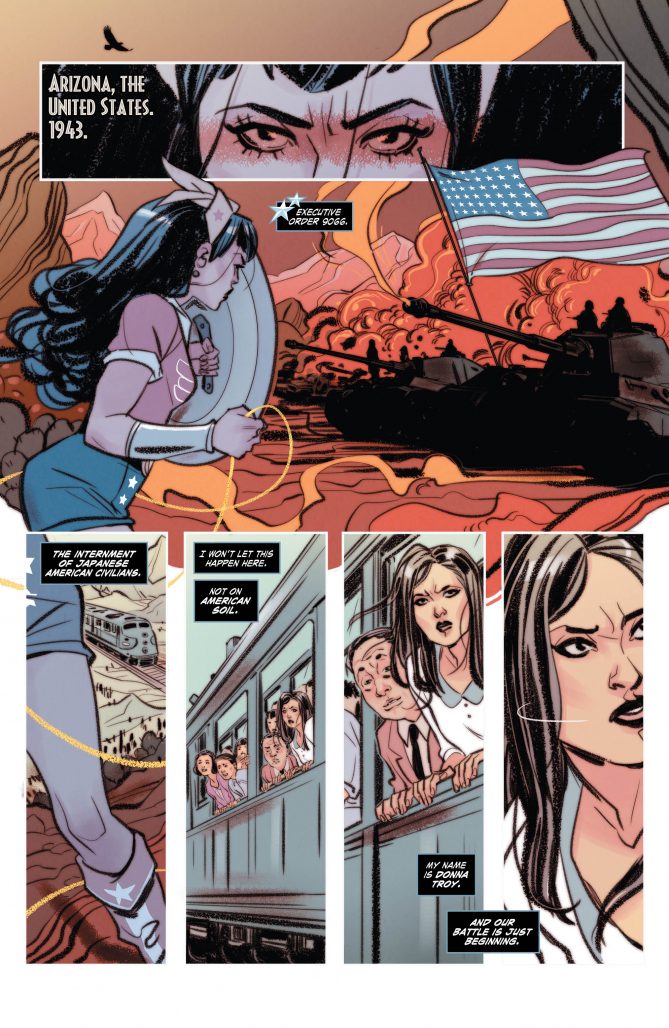
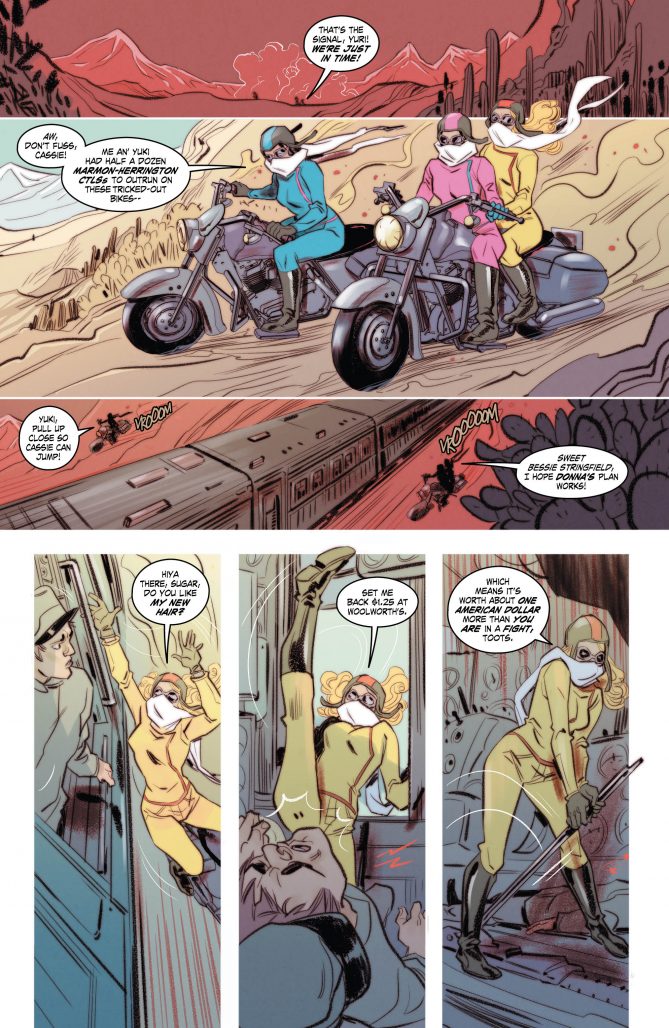
“As a nation or as a people, the things we want most to forget are the things that must be most remembered.”
Verdict: Buy
 Round-Up
Round-Up
- And the hits keep coming. In Doom Patrol, Gerard Way proves that he understands that the secret to a team book is to give the characters breathing room to develop. With at least six interesting subplots being developed at once, this series consistently delivers and keeps me wanting more. What effect are Larry’s dormant adventures having on his body and mind? What sort of magical powers is Lucius on the verge of unleashing? And is Casey’s relationship with her cat about to go really, really sour? I’m tuned in for the long haul on this one.
- A revisit of the O’Neil/Adams “Hard Traveling Heroes” storyline is timely as hell and Green Arrow #30 made the most of it. I thought this version (homage? sequel?) was very well balanced. It included enough elements of the original series to trigger some nostalgia but it made necessary adjustments like calming Ollie’s anger down about three notches. The dialogue comes off as natural: Hal and Ollie sound like old friends by not having to say too much. A longer review of this storyline is certainly warranted soon. And I love how Ollie calls out the Green Lantern power ring for being “a cheat”. We were all thinking it.
- The art team of Benes, Kirkham, and Tan made Superman #30 an enjoyable display. All those yellow constructs reminded me of the GL books in their Sinestro Corps War heyday. The characterization was dead on as well, with Sinestro throwing in a reference to the “insufferable” Jordan and Superman lecturing the avatar of fear about the unplumbed depths of humanity. Wait…the Weaponers of Qward took down Superman with a few thunderbolts?? Okay, sure.
- The Bane Conquest series reminds me of the days when I was a voracious collector of all things Batman. This is not a compliment. My collection ended up being a rambling combination of books I was proud of and read over and over again, mixed with random Bane miniseries that I didn’t remember and didn’t care to revisit. Usually guest starring Catwoman. With DC’s line feeling revitalized and exciting again, this comic is the fat that forgot to get trimmed. In a word, unnecessary.
Miss any of our earlier reviews? Check out our full archive!


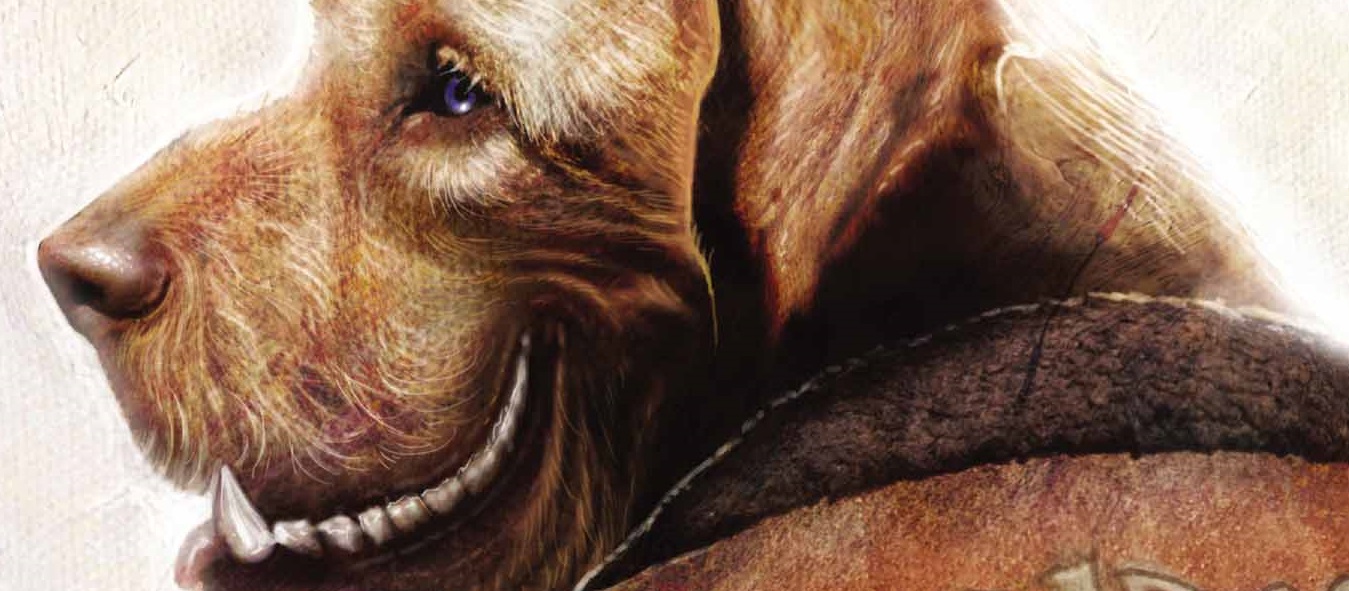
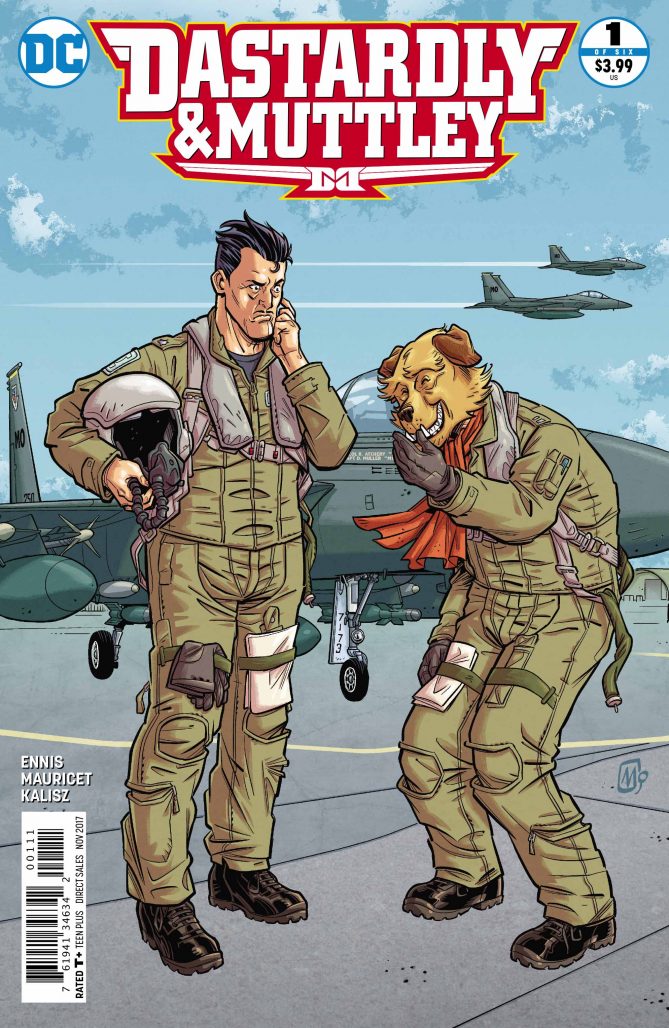 Dastardly & Muttley #1
Dastardly & Muttley #1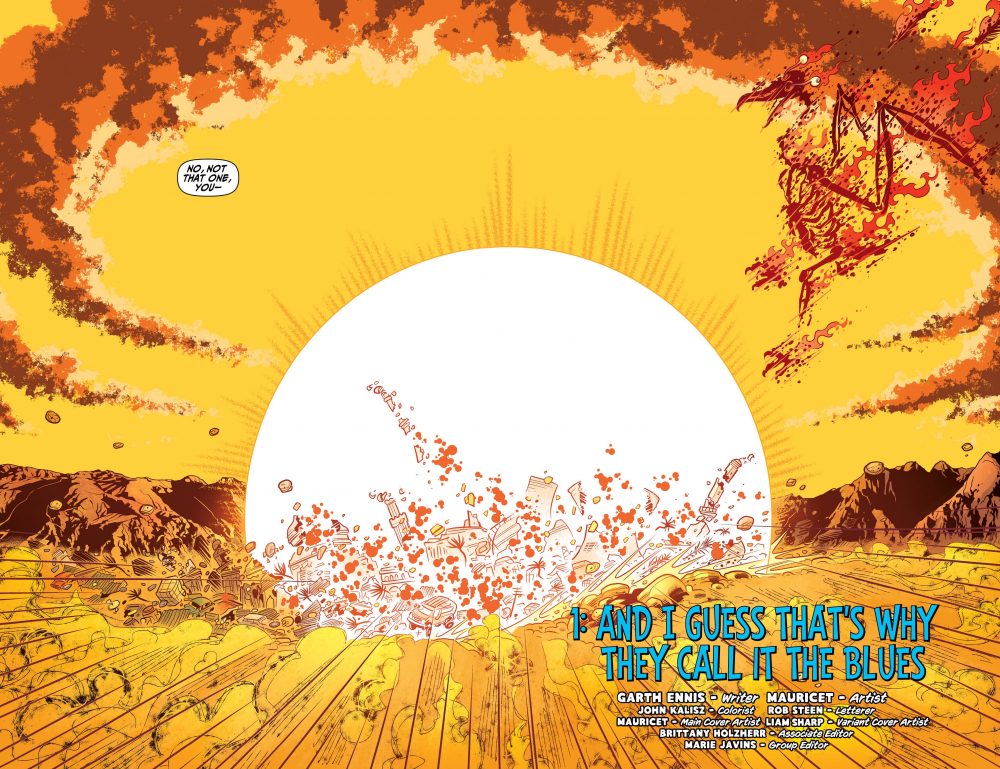
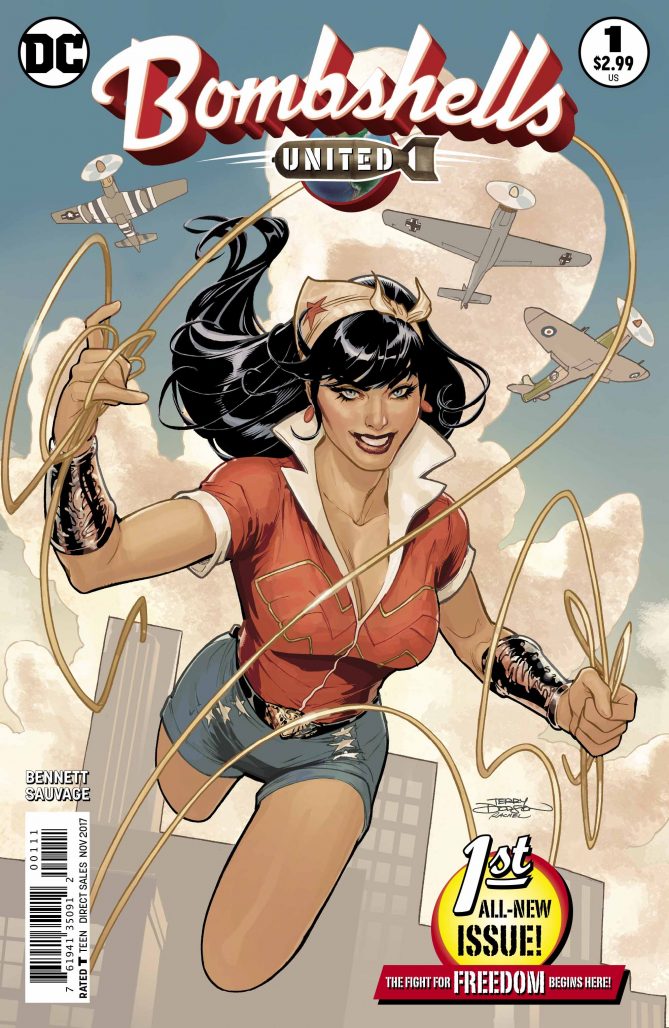 Bombshells United #1
Bombshells United #1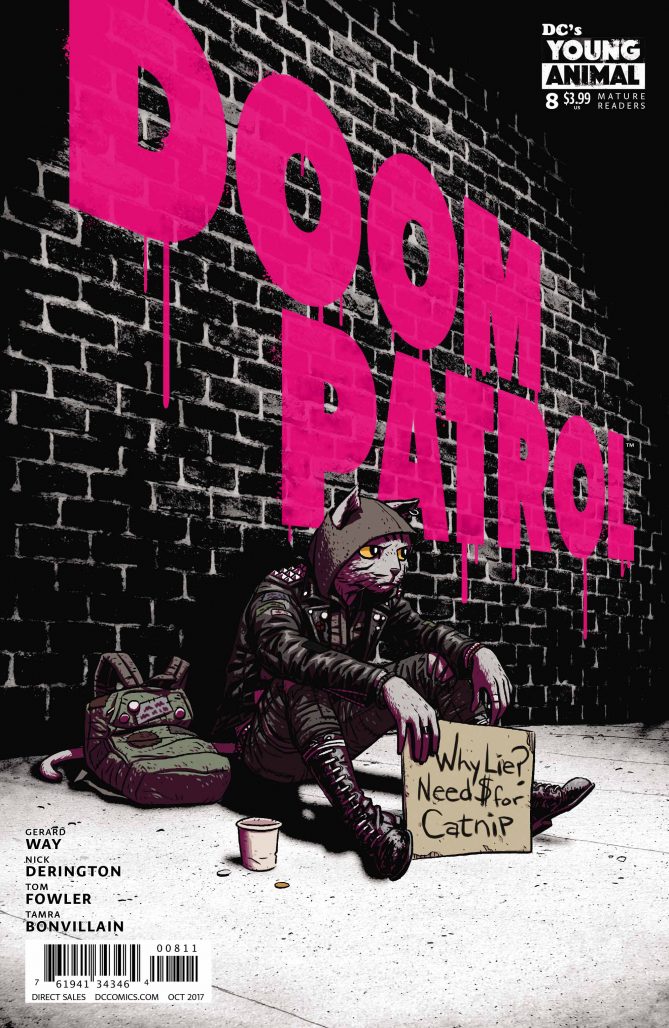 Round-Up
Round-Up


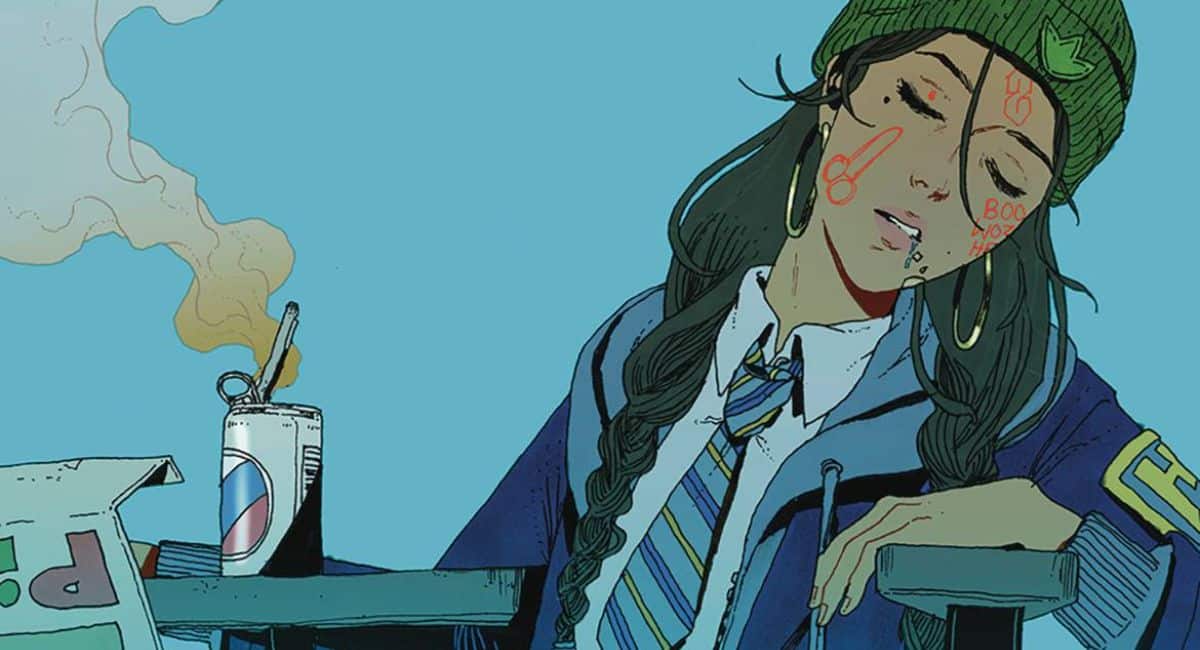

well inspired.!!!!!!!DUDE!!!!!!
Comments are closed.